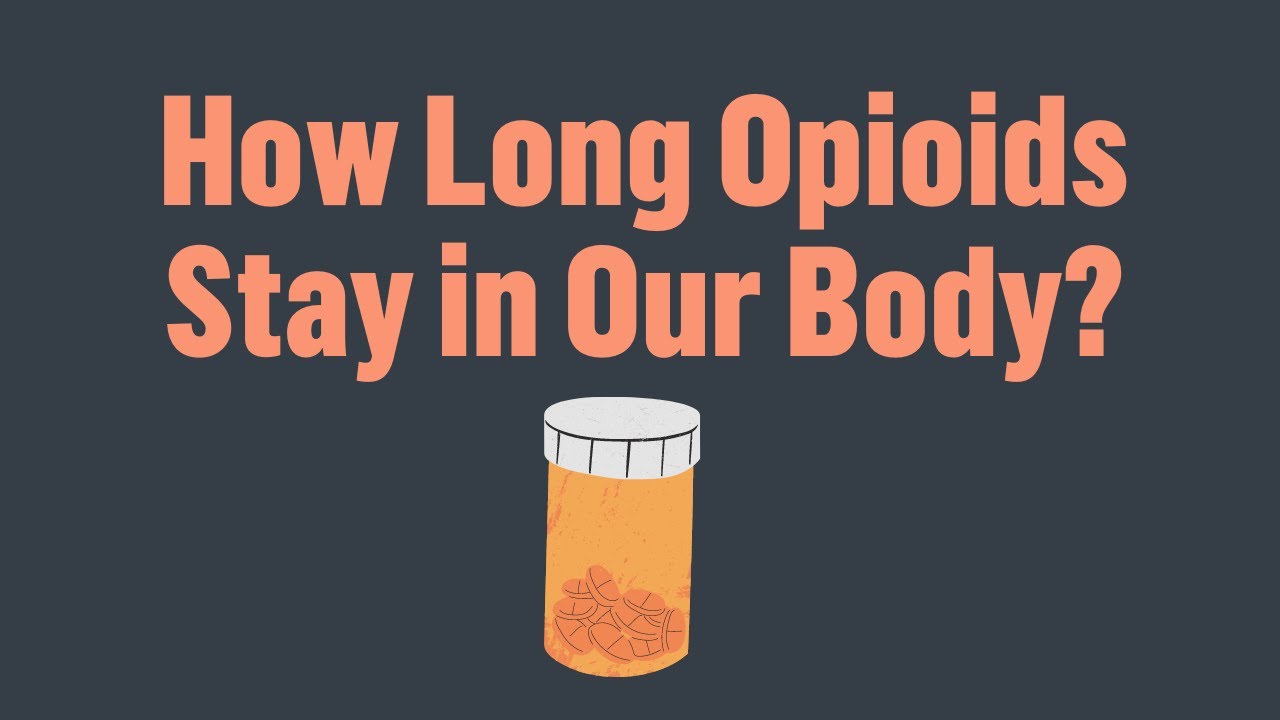The question looms in the minds of many folks grappling with the challenges of addiction: “How long does methadone stay in your system?” In the world of recovery, methadone is a constant companion, but its stay in one’s body isn’t a guest who quickly says goodbye. It’s essential to dig deep and understand how this medication lingers, not just to manage treatment effectively, but to pave a safer path toward recovery.
The Lifespan of Methadone in Your Body
Methadone, a lifeline for those breaking free from the chains of opioid addiction, boasts a persistence that is both a blessing and a challenge. Picture this: the methadone half-life in a patient tolerant to opioids is roughly 24 hours, while an opioid-naive person might find this stretching to a staggering 55 hours. That means if you’re new to methadone, it can take its sweet time before waving you goodbye.
But, before we jump further in, let’s focus on what “half-life” actually means. Half-life is the time needed for half of the drug to bid farewell to your body. While methadone’s half-life can be a lengthy affair, rest assured, with patience and proper care, it will eventually leave the party of your physiological system—predicted to be after about five half-lives.
Now, weave in various factors like your metabolic mojo or whether other drugs are jigging on the dance floor of your bloodstream, and this timeline can shift.

Detection Timeframes: Methadone in Different Biological Systems
Methadone Retention in Blood and Saliva
Like trying to predict the baltimore weather 10 day forecast, pinpointing the exact duration of methadone in your bloodstream can be tricky. Typically, you’re looking at a couple of days before it’s undetectable. Saliva tests are siblings in timing to blood tests—rarely catching methadone after those initial few days.
How Long Does Methadone Stay in Urine?
The question, “how long does methadone stay in urine?” is a common refrain among those undergoing screening. The answer isn’t one-size-fits-all, ranging from 3 to 12 days after your last dose. But just like your favorite jeans, this fit depends on how your body breaks things down—metabolism, your history with the medication, and even the acidity of your urine.
The Persistence of Methadone in Hair Follicles
Hair follicle tests are the long-term historians of drug use. They can regale tales of methadone presence for up to three months or more. Even when blood and urine tests have moved on, hair remembers.

| **Aspect** | **Details** |
|---|---|
| General Use | Treatment for opioid dependency; pain management |
| Half-life (Opioid-Tolerant) | Approximately 24 hours |
| Half-life (Opioid-Naive) | Approximately 55 hours |
| Overall Time in System | Up to 5 half-lives, roughly 4.1 to 12.5 days (opioid-tolerant); 9.2 to 29.2 days (opioid-naive) |
| Urine Drug Screen Detection | Generally detectable for 3-12 days post-last dose |
| Blood Test Detection | 24 hours to a few days after last dose |
| Saliva Test Detection | 1-10 days post-last dose |
| Hair Follicle Test Detection | Up to 90 days post-last dose |
| Factors Affecting Duration | Dosage, frequency of use, metabolic rate, age, health, kidney and liver function |
| Methadone Maintenance Treatment Duration | Varies from a year to over 20 years, with tailored tapering for cessation |
| Caution on Drug Screens | False positives possible due to quetiapine, doxylamine, olanzapine, diphenhydramine, verapamil |
| Dosage Adjustment for Withdrawal | Gradual tapering over weeks or months by healthcare provider’s guidance |
Factors That Influence Methadone’s Presence in Your System
Metabolic Rate and Health Conditions
Your body’s metabolism is like your personal inner rhythm, with factors like age and liver function affecting its tempo. A sluggish beat might take its time clearing methadone from your system, whereas a sprightlier pace could see it metabolize faster.
Dosage and Duration of Use
Think of regular methadone use like a snowball effect—the more frequently you use it, and the higher the dose, the bigger the buildup that has to melt away over time. This can mean a longer stay in your system than if you were a brand-new user or on a lower dose.
Interactions with Other Medications or Substances
Introducing other substances into your mix—whether it’s a couple of drinks with gabapentin And alcohol or a cocktail of different medications—can either step on the brakes or press the gas pedal of methadone’s metabolism.

The Role of Withdrawal Management and Methadone Clinics
Withdrawal is a bear of a situation, but methadone clinics can be your bear-proof fortress, offering precise dosing and vigilant monitoring. For folks in the grips of opioid addiction, a well-timed methadone regimen holds off withdrawal’s unwelcome advances and puts overdose fears at bay.

Safeguarding Against Methadone Misuse: What You Need to Know
While methadone is a critical ally for many on the road to recovery, the long embrace it has with your system means you’ve got to handle it with care to fend off the demons of dependency or misuse. Staying clued in about how methadone interacts with your body is essential for keeping it in the zone of help rather than harm.
Embracing a Future Free From Addiction: The Path Ahead
The nitty-gritty of “how long does methadone stay in your system” is but a chapter in the epic tale of overcoming addiction. The heroic journey ahead is paved with support that spans the spectrum—from therapeutic heart-to-hearts to leaps of faith into the arms of support groups. Beyond the chemistry of clearing methadone from your bloodstream lies the quest for a life brimming with hope and free from the shadow of addiction.
Like the undying spirit of resilience channelled by Elizabeth Vargas, and the deep well of compassion shared by Brené Brown, at MothersAgainstAddiction.org, we stand by all parents who need a beacon of light for their child’s journey to recovery. We’re here to light the way, come rain or shine.
How Long Does Methadone Stay in Your System?
So, you’re noodling around, wondering, “How long does methadone stay in your system?” Well, strap in, because I’ve got some answers that are as interesting as spotting Dylan Sprouse in a café!
First things first, methadone’s got more staying power than most would think—it can linger like an unexpected house guest or, say, like the water from a house flooded situation. Methadone can be detected in your bloodstream for up to 24 hours, but don’t let that fool you; this drug is a marathon runner, not a sprinter. It hangs out in your urine for 2-4 days and has even been caught crashing in the hair follicle party for up to 90 days! And just like that pair of trusty Hoka Gaviota sneakers that stick with you mile after mile, methadone sticks in your saliva for 1-10 days.
Now, hold your horses—methadone isn’t just playing hide and seek in your body like a mischievous spirit. It’s there for a reason, providing a steadier, more prolonged effect than the fleeting visits of drugs like percocet, which leaves you wondering How long Does a Percocet stay in Your system after the encore is over. The point is, methadone’s not in it for the fifteen minutes of fame à la Kelly Mcgillis; it’s there for the long game, helping those in recovery ease out of opioid dependency and keep withdrawal symptoms in the backseat.
Speaking of fame, while methadone’s not quite as talked about as Dylan Sprouse turning heads on the big screen, it’s got its own claim to fame in the medical community. It’s like the unsung hero that’s been supporting recovery efforts since the 60s—totally retro, I know! But even as it stands against the test of time, remember to tip your hat to it with respect—because any medication is only as good as its responsible use, and just like the aftermath of a house flooded, misuse can leave quite the mess.
As you digest all this, bear in mind, just like a comfortable pair of Hoka Gaviota, everyone’s experience with methadone is unique. Your body’s own characteristics—like metabolism, health condition, and even genetics—play a role, similar to how Kelly McGillis brought her unique flair to every role she played. So, when the curtain falls and the lights come on, just remember, methadone’s no fleeting guest star; it’s got a script with a slower pace and a more subtle impact in the world of recovery.

What is the duration of methadone in the body?
What is the duration of methadone in the body?
Oh boy, methadone sure likes to linger! So, here’s the scoop: if you’re new to methadone, it’s gonna stick around for quite a while—up to 55 hours, give or take. But if you’ve been around the block with opioids, that time drops to about 24 hours. And since it generally takes about five half-lives for this drug to clear out of your system, methadone’s got some staying power. It’s like that one guest at a party who just doesn’t know when it’s time to hit the road!
What can show up as methadone in a urine test?
What can show up as methadone in a urine test?
Well, listen up, because this one’s tricky. A few unexpected guests can crash the party in your urine drug screen, making it look like methadone was there. We’re talkin’ about some other meds like quetiapine, olanzapine, or even verapamil. It’s like they’ve got a fake ID that says “methadone” on it, so make sure you double-check those results!
What is the elimination half-life of methadone?
What is the elimination half-life of methadone?
Straight from the horse’s mouth: methadone’s half-life is kinda like a box of chocolates; you never know what you’re gonna get. It can be as short as 8 hours or stretch up to 59 hours depending on your dose. And for those who’ve been taking opioids for a while, 24 hours is a good rule of thumb. But remember, it’s a marathon, not a sprint—it’ll take a handful of half-lives to actually wave goodbye to methadone.
What is the longest that patients should stay on methadone?
What is the longest that patients should stay on methadone?
Alright, brace yourselves—it’s a bit of a marathon. Methadone maintenance isn’t a sprint to the finish. Some folks could be in it for a couple of years, while others might be on this journey for over 20 years. But remember, everyone’s race is different, so when both the patient and doc feel it’s time to hang up the running shoes, they’ll ease off the methadone gas pedal nice and slow, avoiding any nasty withdrawal potholes.
Is methadone a long acting drug?
Is methadone a long acting drug?
You betcha! Methadone’s like the tortoise in the race—not the fastest, but it sure keeps chugging along. With a half-life that’s roughly 24 hours long, and even longer if you’re new to opioids, it’s got legs that’ll last far longer than your average painkiller hare. Methadone’s steady stride helps keep cravings and withdrawal at bay for the long haul.
Does methadone have side effects?
Does methadone have side effects?
Absolutely, no sugarcoating here. Just like any medicine, methadone’s got its own bag of tricks—some side effects. You might feel drowsy, get a bit dizzy, or have a stomach that’s not playing nice. But hey, it’s important to weigh the pros and cons with your doc because, for many, methadone’s a game-changer.
What can cause a positive methadone test?
What can cause a positive methadone test?
So, imagine a few party crashers like quetiapine, doxylamine, and even the antihistamine diphenhydramine that could lead to a methadone mix-up in a drug test. They might not have been on the guest list, but they sure can trigger a false alarm. Always best to check in with your doc when you get a curveball result like that.
What happens if you test positive for a drug test but have a prescription?
What happens if you test positive for a drug test but have a prescription?
Hold your horses, because this isn’t a catastrophe! If you’re waving around a legitimate prescription like it’s a golden ticket, then you just need to show that to your employer or the testing agency. It’s your get-out-of-jail-free card that should settle any ruffled feathers and prove that you’re playing by the rules.
What’s tested on a 10 panel drug test?
What’s tested on a 10 panel drug test?
Alright, folks, let’s count ’em off! A 10 panel drug test is like a nosy neighbor, peeking into your business for drugs like cocaine, marijuana, PCP, amphetamines, and benzodiazepines, just to name a few. It even catches less common culprits like methadone, barbiturates, and Quaaludes. Talk about thorough!
Can methadone be excreted in urine?
Can methadone be excreted in urine?
Yesiree, methadone heads for the exit through your urine. It’s your body’s way of giving it the old heave-ho after it’s done its job. So, when you take a leak, you could be saying sayonara to some methadone too.
Is methadone excreted in feces?
Is methadone excreted in feces?
You bet it is. Along with taking the urine express, methadone can hitch a ride outta your body in feces. It’s a bit of an ‘out with the old, in with the new’ scenario, making sure your system gets a good spring cleaning.
What is the half-life of 30 mg of methadone?
What is the half-life of 30 mg of methadone?
Well, if we’re talking about a 30 mg dose of methadone, the half-life doesn’t necessarily change just because of the dose. It’s still a wide range, anywhere from 8 to 59 hours, with 24 hours being a common stopwatch time. But as always, your mileage may vary—it all depends on the individual’s physiology and opioid history.
Is methadone good for long term pain?
Is methadone good for long term pain?
Methadone’s not just a one-hit-wonder; it’s got a rep for being in it for the long game when it comes to chronic pain. Its long-lasting effects can provide relief without too many repeat performances, making it a headliner for many folks managing ongoing pain.
Is patient retention higher with methadone?
Is patient retention higher with methadone?
Yep, methadone has a bit of a fan club when it comes to keeping patients in treatment. Its ability to keep withdrawal and cravings at bay for the long-term helps patients stick with it, like loyal fans at a rock concert who refuse to miss the encore.
What is the most common false positive drug test?
What is the most common false positive drug test?
Grab your hats, ’cause this one’s a frequent flyer—antidepressants, especially SSRIs, are often the usual suspects for false positives in drug tests. They can be mistaken for all sorts of substances, so it’s important to keep the lines of communication open with the testing folks.
What can cause a false positive urine test for buprenorphine?
What can cause a false positive urine test for buprenorphine?
Hold onto your hats—this one’s wacky. You could get a false positive for buprenorphine if you’re taking certain painkillers, other medications, or even eating a poppy seed bagel! Who knew brunch could wreak such havoc?
What foods can cause false positive drug test?
What foods can cause false positive drug test?
Get this—certain foods are like undercover agents for false positives. Poppy seeds can make you look like an opium fan, and foods like hemp seeds might throw cannabis accusations your way. So next time you’re up for a drug test, you might think twice about that poppy seed muffin!
What are the metabolites of methadone?
What are the metabolites of methadone?
Methadone breaks down into a couple of key players called metabolites. You’ve got EDDP and EMDP running around after methadone is metabolized, which are basically the breadcrumbs that show where methadone’s been in your body. So, if someone’s sleuthing to see if methadone’s been at the scene, they’ll be looking for these guys.




























